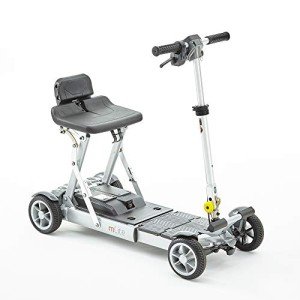Understanding Mobility Aids: Enhancing Independence and Quality of Life
As society continues to age and people increasingly look for methods to preserve self-reliance, the need for mobility aids has never ever been more pertinent. Mobility aids, which include a series of devices developed to assist people with walking or moving around, play an important function in promoting mobility, boosting security, and enhancing general quality of life. foldable mobility scooters for adults will check out the various kinds of mobility aids, their advantages, considerations for choice, and answer some frequently asked concerns.
Types of Mobility Aids
Different mobility aids are readily available, each developed to address specific requirements. The following table sums up a few of the most typical types of mobility aids and their features.
| Type of Mobility Aid | Description | Best Suited For | Key Features |
|---|---|---|---|
| Walking canes | A portable stick offering support and balance. | Individuals who require minimal assistance. | Light-weight, portable, adjustable height. |
| Walkers | Four-legged frames offering stability. | Those requiring substantial assistance while strolling. | Foldable, some with wheels, included safety functions. |
| Rollators | Wheeled walkers with a seat for resting. | People requiring mobility with the choice to rest. | Brakes, baskets for personal products, adjustable height. |
| Wheelchairs | Chairs with wheels for individuals with limited mobility. | Those not able to stroll or requiring substantial support. | Manual or powered alternatives, adjustable seating. |
| Scooters | Motorized devices for bigger ranges. | Individuals with restricted endurance however needing self-reliance. | Various sizes and styles, frequently easily transportable. |
| Crutches | Support devices placed under the arms or forearms. | Individuals recuperating from lower limb injuries. | Adjustable, lightweight, requires upper body strength. |
| Stairlifts | Mechanical devices for moving between floorings. | Users facing difficulties in multi-level homes. | Adjustable for various staircases, automated. |
Advantages of Mobility Aids
Mobility aids offer a range of benefits that can substantially boost the lives of people dealing with mobility challenges. Some noteworthy advantages include:
- Increased Independence: Mobility aids empower individuals to move freely without relying on others for help, thus improving their confidence and self-esteem.
- Enhanced Safety: Using mobility aids can lower the risk of falls and injuries, specifically for older adults or those with balance concerns.
- Improved Quality of Life: By assisting in mobility, individuals can engage in social activities, participate in events, and take pleasure in life more totally, contributing to better emotional and psychological health.
- Rehab Support: After surgery or injury, mobility aids offer required support and stability, assisting in healing and rehabilitation procedures.
- Ease of access: Many mobility aids are designed to be used both indoors and outdoors, making sure that people can navigate various environments with ease.
Elements to Consider When Choosing Mobility Aids
Selecting the appropriate mobility aid requires mindful consideration of several factors, including:
| Factor | Factors to consider |
|---|---|
| User's Needs | Assess the level of mobility required; think about whether the user requires momentary or long-lasting assistance. |
| Physical Limitations | Examine the user's strength, balance, and coordination to identify the best kind of help. |
| Setting | Consider the main environments where the help will be utilized, such as home, outdoors, or specific surfaces. |
| Weight and Portability | Make sure that the selected gadget is manageable relating to mobility and storage, especially for outdoor use. |
| Spending plan | Mobility aids come in a range of prices; think about insurance coverage and available financing options. |
| Adjustability | Pick aids that can be changed for height and convenience to accommodate development or changing needs. |
Regularly Asked Questions About Mobility Aids
1. How do I know if I require a mobility aid?
Many factors can signify the requirement for a mobility aid, such as difficulty strolling or stabilizing, tiredness while standing, or a current surgery impacting mobility. Consulting with a health care specialist can provide guidance tailored to private needs.
2. What kinds of mobility aids are covered by insurance?
Coverage varies between insurers, however a lot of supply options for resilient medical devices, which typically includes wheelchairs, walkers, and some types of walking canes. Consult your insurance coverage company for particular coverage information.
3. Can mobility aids be used outdoors?
Yes, numerous contemporary mobility aids are created for outside usage. Rollators, scooters, and some walkers are geared up with features for stability and ease of usage on various surface.
4. How do I preserve my mobility help?
Regular upkeep involves looking for any wear and tear, making sure that parts such as wheels, brakes, and frames are operating correctly, and cleaning up the devices as needed. Following the manufacturer's guidelines is important for safety.
5. Is there a danger of becoming based on mobility aids?
While some users may become reliant on mobility aids, they are created to promote self-reliance and mobility. Slowly using a mobility help can boost confidence and help retain physical strength and coordination.
Mobility aids are important tools that empower individuals to conquer physical difficulties, promoting independence and boosting lifestyle. By comprehending the various kinds of mobility aids available, their benefits, and essential elements for consideration, families and caretakers can make educated decisions that best meet the requirements of their loved ones. With the best assistance, those with mobility difficulties can lead fulfilling and active lives, totally free to explore the world around them.

